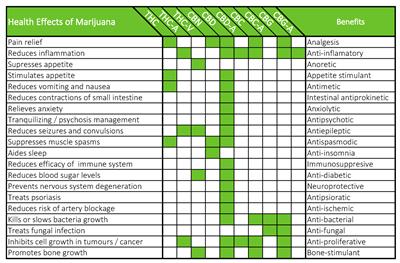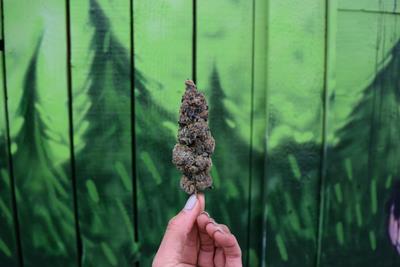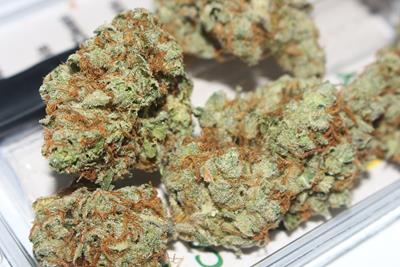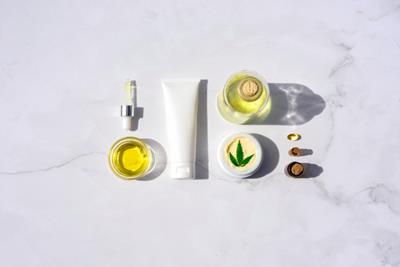
Wednesday November 1, 2017
Updated on 8/2/2021
By Morgan Smith
 Health/Science
Health/Science
Cannabis consumers can be picky when it comes to the products they use—and terpenes can play a big role in determining a consumer’s favorite scent, flavor and effects profile. Because of this, the cannabis industry is seeing an influx in products with high terpene content like vape/oil cartridges, distillate and other various concentrates.
Need a terpene refresher? Terpenes are the chemical compounds that make up a strain’s taste, smell and flavor. They’re found in the same area of the marijuana plant that produces THC, CBD and other cannabinoids and there are more than 100 of them in the cannabis plant alone – most of which have unique therapeutic qualities.
But because terpenes have gained such big notoriety in the marijuana industry, and cannabis-derived terpenes are harder to come by, companies are turning to alternative terpene sources outside of cannabis. Since they can be derived from many different plants, there are plenty of options to choose from. But what are differences between cannabis-derived terpenes and terpenes from other plants?
Plant vs. Cannabis Terpenes
Terpenes are derived from extracting the essential oil from a plant. Depending on the way the cannabis is harvested, terpene properties can vary. But similar terpene profiles and aromatic properties extracted from cannabis can also be found in different plants, herbs and fruits. (They play a pretty essential role in protecting plants and deterring insect or environmental stress.)
Generally, we’re familiar with any plant terpene for their aromatic qualities and herbal remedies. Think essential oils: Tea tree oil, which has a very distinct aroma and features volatile terpenes like terpinolene, is used as an anti-inflammatory and antiseptic. The cannabis plant, however, produces different results and affects us a bit differently. The makeup of chemicals in cannabis and synergistic qualities work with your body’s CB2 receptors and can cause psychoactive effects if combined with the right compounds.
At the end of the day, terpenes are the building blocks for any plant’s aroma and flavor.
They’re just as much a part of lavender as they are cannabis. And because we have advanced technology to isolate terpenes in most all plants, more and more cannabis companies are introducing individual terpenes into their products.
Why might a company favor one over the other? For one, cannabis terpenes are much pricier to extract since the process is a bit more complicated. It’s an economical benefit to reintroduce plant-based terpenes after the product goes through a high-heat distillation process (when essential oils and terpenes are removed). Plus, you can buy natural terpenes in bulk versus a smaller yield from a cannabis plant.
One benefit of using cannabis-based terpenes, though, is that a terpene extracted from a cannabis plant will provide a more natural entourage effect in most cases. Cannabis terpenes also provide the consumer with the maximum therapeutic and medicinal value of the individual terpene and plant.
Best Ways to Consume Terpenes
Currently, there are many ways to incorporate terpenes into your daily routine. One of the best ways to get the full experience and efficacy from terpenes is to vaporize them. While there are many vaporizers on the market, there are several that place a heavier focus on a robust, terpene experience.
In addition to vaporizing terpenes, dabbing is perhaps the most well-known option. Concentrates in general are much more focused toward having a high-terpene content nowadays, resulting in an ever-lasting quest for flavor from consumers.
Natural vs. Synthetic Terpenes
While we’re on the topic of terpenes, it’s important to note the difference between natural and synthetic varieties. And, in case you’re wondering, we always recommend to stick to natural terpenes – specifically those that are cannabis-derived.
Think about natural and synthetic terpenes like organic vs. non-organic or using an actual banana vs. banana flavoring. Natural terpenes are extracted straight from the source like plants and whole food. You can find limonene in lemons, pinene in pine and citronellal in oranges. There are a variety of extraction methods to get these terpenes out, but ultimately it depends on the plant’s makeup and chemical properties.

Synthetic terpenes, on the other hand, are produced in a lab by chemical manipulation and blending. This is like designing your perfect terpene profile and it’s a way to know a strain’s terpene potency to a “T,” but isn’t exactly the most natural way to do things. Extractors can do this a number of ways: dilution, re-distilling and reconstruction are the most common methods. These synthetic creations may use reproduced chemicals to recreate some naturally occurring properties as well, which is why we’d suggest straying away from them.
The technology is still being developed and new products are still being created as we gain a better understanding about terpenes, their influence and interaction with one another.
Now that you know more, pay attention to the products you’re buying. Does it have natural or synthetic terpenes? Are essential oils and plant-based compounds being added to the final product? These are all great questions to ask when diving into the wide world of terpenes.







